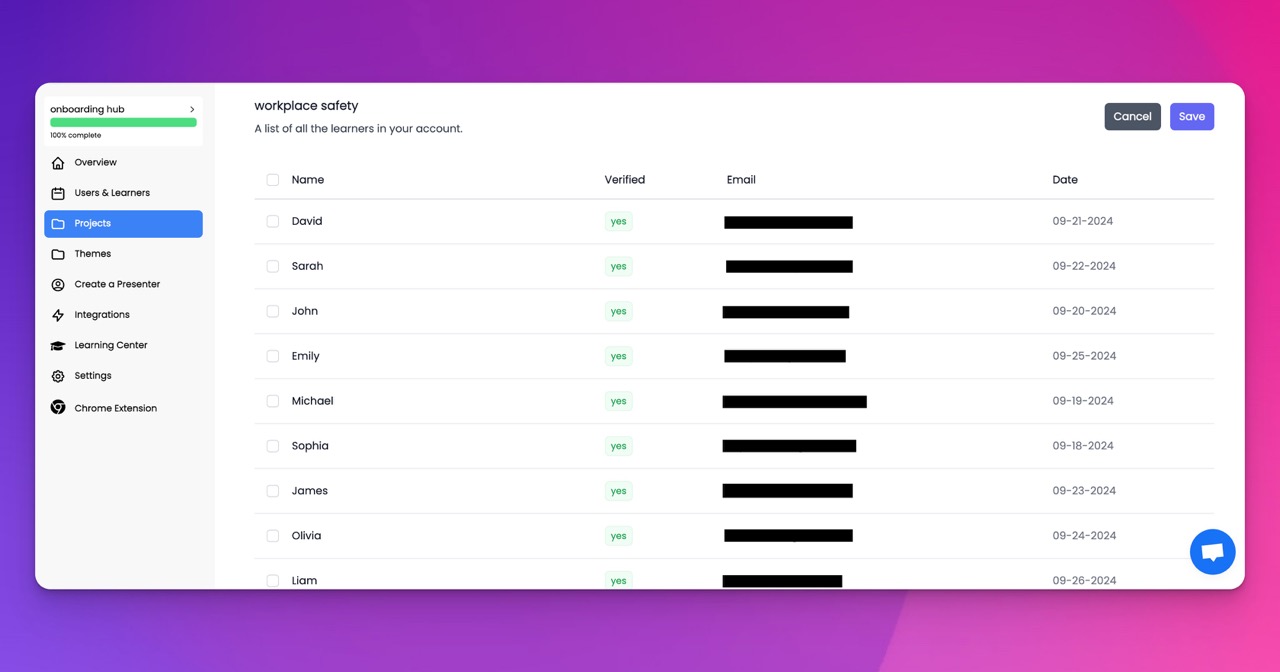🎉 Trainday now integrates with Zendesk and Hubspot 🎉 Trainday now integrates with Zendesk and Hubspot 🎉 Trainday now integrates with Zendesk and Hubspot
🎉 Trainday now integrates with Zendesk and Hubspot
🎉 Trainday now integrates with Zendesk and Hubspot
Contact
The Role of Data in Developing and Implementing Workplace Violence Prevention Plans
Workplace violence is a serious concern across industries, posing risks to employee safety, organizational morale, and operational continuity. Developing an effective workplace violence prevention plan is not just a regulatory requirement for many organizations—it’s a critical step in creating a safe and supportive work environment.
While traditional approaches to prevention often rely on generalized policies and training, data-driven strategies offer a more targeted and impactful way to identify risks, address vulnerabilities, and empower employees. At Trainday, we specialize in harnessing data to design effective training and prevention programs, helping organizations build safer workplaces.
Why Workplace Violence Prevention Matters
Workplace violence encompasses a broad range of behaviors, from verbal threats and harassment to physical assaults. Its consequences can be severe, including:
Employee Harm: Both physical injuries and emotional trauma.
Decreased Morale: A lack of safety can erode trust and engagement.
Operational Disruptions: Incidents can lead to reduced productivity and increased turnover.
Legal and Financial Risks: Noncompliance with workplace safety regulations can result in costly penalties and lawsuits.
Proactively addressing these risks through a comprehensive prevention plan is essential for any organization.
The Power of Data in Workplace Violence Prevention
Data plays a vital role in developing and implementing an effective workplace violence prevention plan. By analyzing key insights, organizations can move from reactive responses to proactive prevention. Here’s how data contributes to the process:
1. Risk Identification
Data helps organizations identify patterns and trends that indicate potential risks. For example, incident reports, employee surveys, and exit interviews can reveal recurring issues, such as workplace harassment or high-stress environments.
2. Customizing Training
Generic training often fails to address the specific risks employees face. By leveraging data, organizations can create tailored training programs that address the unique challenges of their workplace and industry.
3. Evaluating Effectiveness
Data enables organizations to measure the impact of their prevention efforts. Metrics like incident frequency, employee feedback, and training completion rates provide a clear picture of what’s working and what needs improvement.
4. Predictive Insights
Advanced analytics can identify early warning signs of potential violence, such as patterns of conflict or behavioral changes, allowing organizations to intervene before an incident occurs.
Steps to Develop a Data-Driven Workplace Violence Prevention Plan
1. Conduct a Risk Assessment
Start by gathering data on workplace violence risks, including:
Incident Reports: Review past incidents for common causes and outcomes.
Employee Feedback: Use surveys and interviews to understand concerns and perceptions of safety.
Industry Benchmarks: Analyze data from similar organizations to identify common risks.
2. Develop Targeted Training
Use the insights from your assessment to create customized training programs. Platforms like Trainday can help you transform incident reports, HR data, and other resources into engaging, role-specific training modules.
3. Establish Clear Policies
Use data to inform the development of policies and procedures that address identified risks. Ensure policies are clearly communicated and easily accessible to all employees.
4. Implement Monitoring Systems
Set up systems to track workplace violence risks and responses. This includes logging incidents, analyzing trends, and collecting employee feedback regularly.
5. Evaluate and Adapt
Continuously measure the effectiveness of your prevention plan using data. Refine policies, training, and processes as needed to address evolving risks.
How Trainday Can Help
At Trainday, we make it easy for organizations to create data-driven workplace violence prevention plans. Our platform empowers businesses to:
Leverage Data: Transform incident reports, surveys, and feedback into actionable insights.
Create Tailored Training: Develop engaging, role-specific training modules that address unique workplace risks.
Monitor Progress: Track training completion rates, employee engagement, and incident reductions in real-time.
Iterate Quickly: Use data to refine and improve your prevention strategies as new challenges arise.
With Trainday, organizations can move beyond compliance and build a culture of safety and accountability.
Accelerate Compliance.
Deliver OSHA-Ready Courses Instantly.
Empower your team with data-driven training solutions tailored to your industry's safety standards. Stay compliant, reduce risks, and boost productivity with AI-powered course creation.
